Tracing Japanese History via
World Heritage Sites
Welcome to Japan’s World Cultural Heritage
The buildings and ruins of a country reveal the unique characteristics of its history and society.
However, the selection of such sites must be based on rigorous academic review and objective judgment.
UNESCO’s World Cultural Heritage sites are chosen through extensive research and deliberation, with the agreement of 196 countries worldwide — making them some of the most reliable choices.
As of August 2024, there are 952 World Cultural Heritage sites around the world — roughly five per country on average. This is a number that seems fitting when considering the entirety of human history.
Japan, an archipelago of about 14,000 islands - including Hokkaido, Honshu, Shikoku, and Kyushu -, has 21 World Cultural Heritage sites spread across an area of roughly 380,000 square kilometers.
In total count, Japan ranks 10th in the world, and 13th in density per 10,000 square kilometers.
Japan’s World Cultural Heritage sites are widely distributed throughout the country, spanning from 15,000 years ago to the 1950s, without concentration in any specific period.
Their number and distribution are sufficient to reveal the characteristics of Japan’s history and society.
As you explore these sites, what qualities will you perceive?
While it would be presumptuous to suggest any conclusion, we believe you will notice one distinctive feature during your visits —
many of Japan’s World Cultural Heritage sites are not mere ruins, but “living” heritage.
They are not simply preserved in form; they continue to serve their original purposes even today.
For instance, at the “Buddhist Monuments in the Horyu-ji Area,” known as the world’s oldest wooden structures, the faith established over 1,400 years ago still endures.
Even sites that have been destroyed by natural disasters or wars have been rebuilt and restored over time.
Because many of Japan’s World Cultural Heritage sites are wooden, reconstruction and repair have long been accepted as part of their ongoing existence.
This publication was written by the Council for Regional Cooperation of World Cultural Heritage, a coalition of 66 municipalities that are home to these sites.
It introduces Japan’s World Cultural Heritage in roughly chronological order, according to the period in which each site emerged.
In favor of brevity, some descriptions may seem simplified, and we regret that we could not include the many visually stunning scenes these sites offer.
If you find something missing, we encourage you to fill that gap through dialogue with the people of these 66 regions, who continue to protect and make use of their heritage despite many challenges.
Such dialogue, we believe, is the very act of joining hands with people around the world — to protect Japan’s World Cultural Heritage, to preserve the history of humankind, and to take one step forward toward building our shared future.
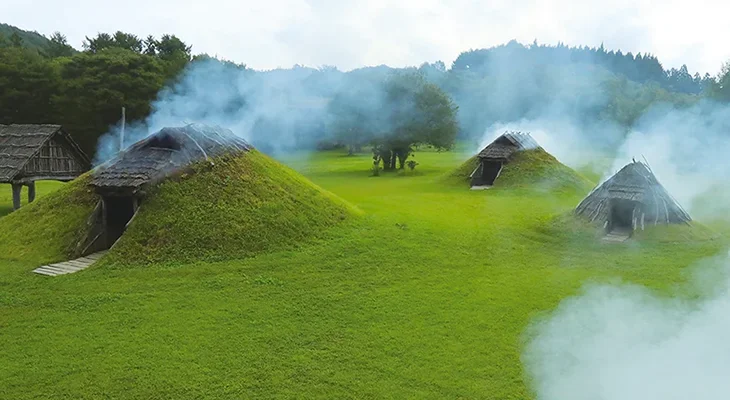
Jomon Prehistoric Sites in Northern Japan
This area of northern Japan had rich arboreal and aquatic resources, with deciduous broad-leaved forests that featured abundant nut-bearing trees, as well as ideal fishing conditions created by the intersection of warm and cold currents off the coast. As such, for more than ten millennia, starting around 15,000 years ago, it was home to sedentary hunter-fisher-gatherer tribes who created pottery. This is a key collection of sites to understand how humans lived before agriculture in Northeast Asia.
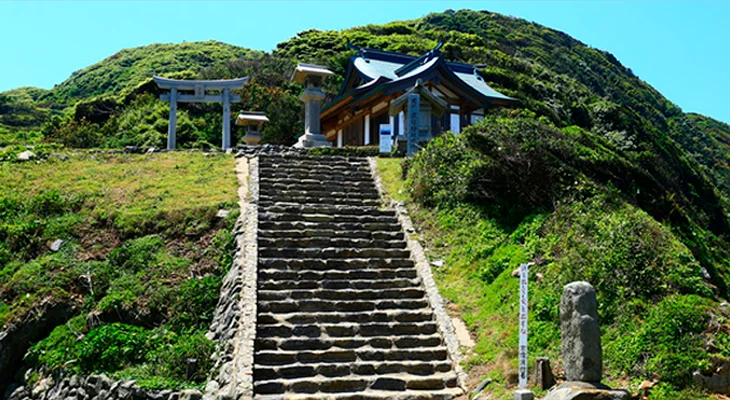
Sacred Island of Okinoshima and Associated Sites in the Munakata Region
The traditional worship of the gods enshrined on Okinoshima developed during a period of vigorous overseas trade with East Asia over a thousand years ago. The Three Munakata Goddesses faith of the Okitsu-miya, Nakatsu-miya, and Hetsu-miya shrines is proof that this living tradition of praying for safety at sea has been passed on down to this day.
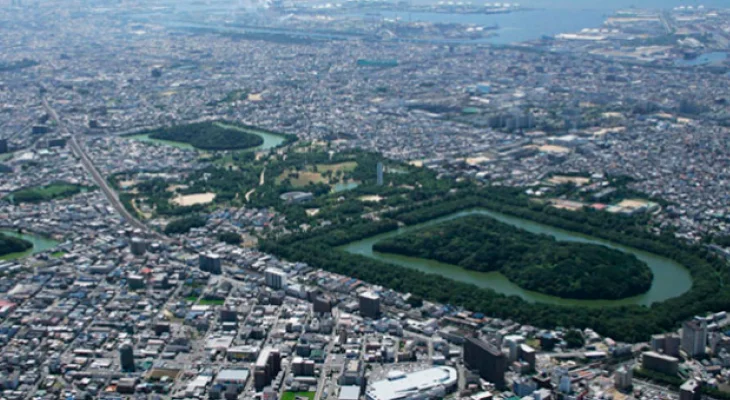
Mozu-Furuichi Kofun Group: Mounded Tombs of Ancient Japan
From the middle of the third century AD, burial mounds called “kofun” began to be built in Japan. From the end of the fourth century to the latter half of the fifth century in particular, vast keyhole-shaped burial mounds over 300 meters long appeared in the plain facing Osaka Bay. This group of mounds represents superb levels of civil engineering skills and a unique period in Japanese history known as the Kofun Period.
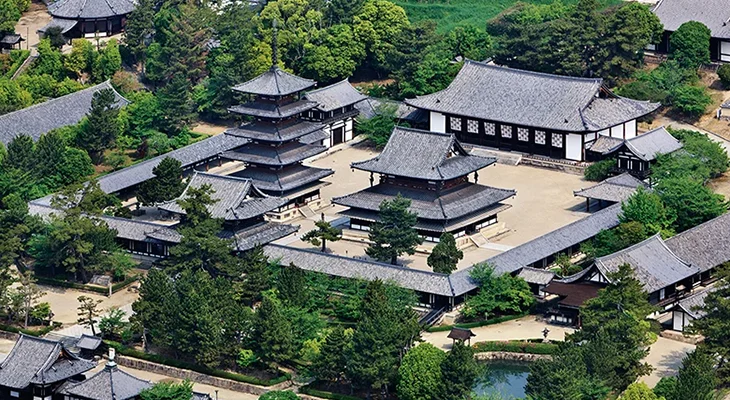
Buddhist Monuments in the Horyu-ji Area
Buddhism was introduced to Japan from the Asian continent in the sixth century. Built in the early seventh century, Horyu-ji is typical of temples of the day and is renowned for being the oldest wooden building in the world. Together with Himeji-Jo, it was the first of the World Heritage Sites in Japan.
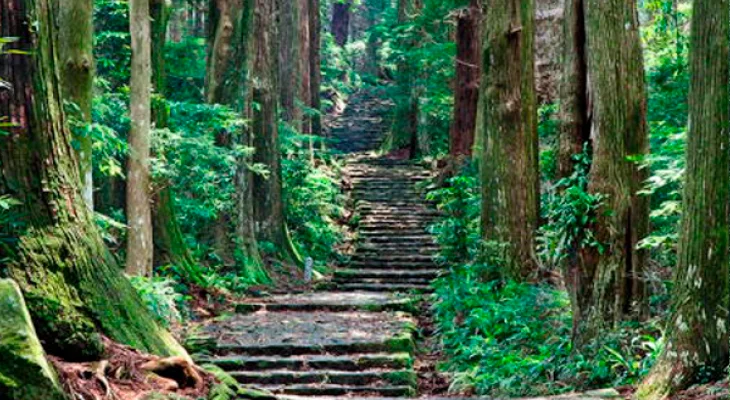
Sacred Sites and Pilgrimage Routes in the Kii Mountain Range
In Japan it was long believed that gods could be found in all of nature. The not easily accessible Kii Mountain Range was considered holy ground, and by the seventh century at the latest had become a place of ascetic practice where mystical powers hidden in nature could be acquired.
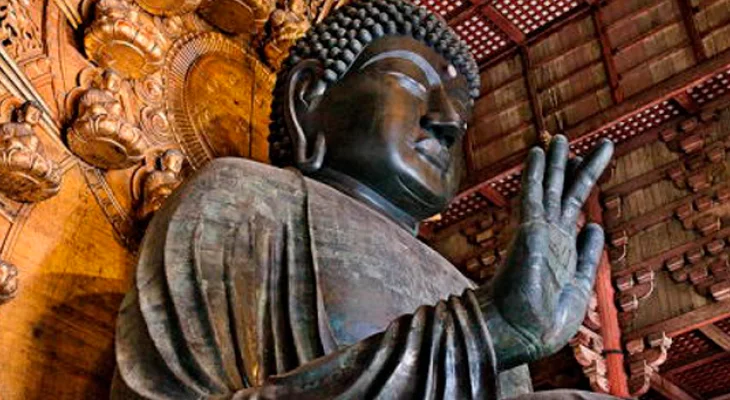
Historic Monuments of Ancient Nara
In ancient times, Japanese culture developed significantly through exchange with the Asian continent. In the early eighth century, Japan's capital was established in ancient Nara (then known as Heijokyo), forming an important foundation for the nation and its culture. In Nara, six temples and shrines, the Heijo Palace ruins, and the Kasugayama Primeval Forest have been designated World Heritage Sites.
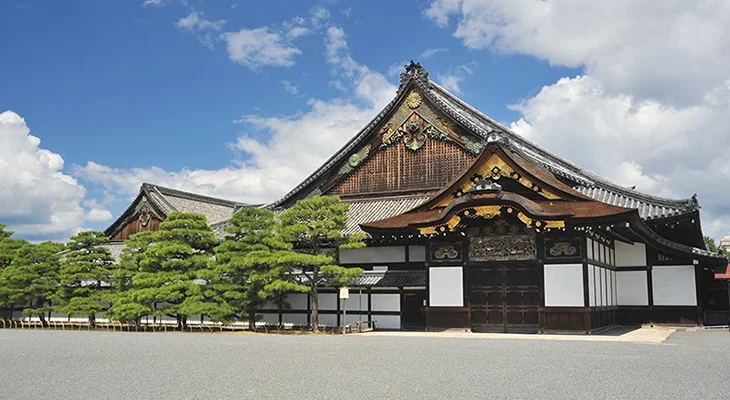
Historic Monuments of Ancient Kyoto (Kyoto, Uji, Otsu Cities)
At the end of the eighth century, the capital was moved from ancient Nara to Nagaoka-kyo and then to Heian-kyo (present day Kyoto). For the more than 1,200 years since then, Kyoto has been the center of Japanese culture. Sixteen temples and shrines and Nijo Castle are listed as World Heritage Sites.
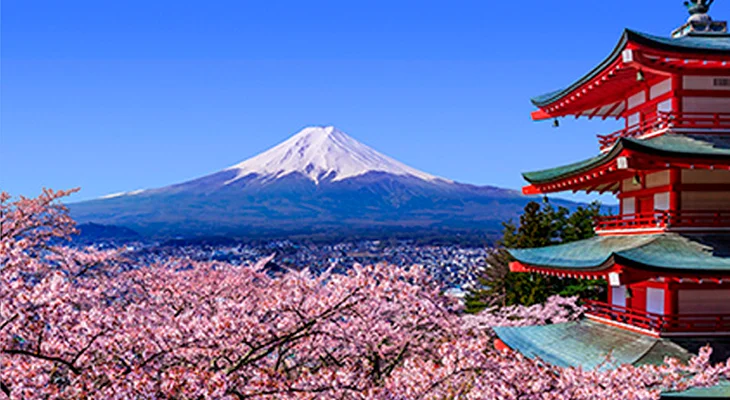
Fujisan, Sacred Place and Source of Artistic Inspiration
Registered as a UNESCO World Heritage Site in 2013, Fujisan has erupted repeatedly since ancient times. Therefore, a shrine was built in the 9th century to “calm down” Fujisan so that it would not erupt again. Later during the Edo period, religious climbs of the mountain became popular among the masses. In addition, Fujisan has appeared as the subject in many works of art, including ukiyo-e color prints.
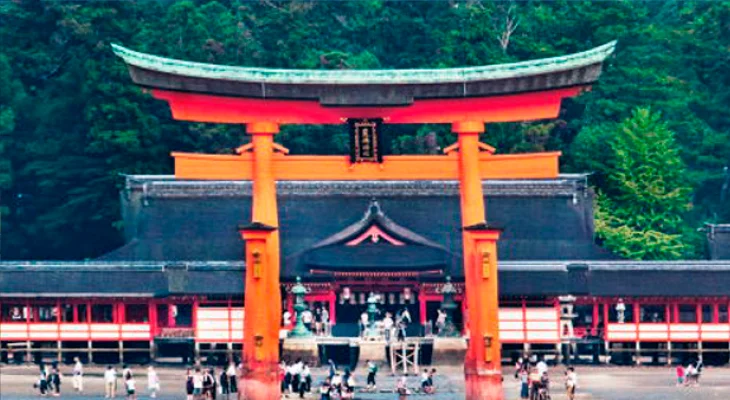
Itsukushima Shinto Shrine
Around the 12th century, the focus of power shifted from the aristocracy to the warrior class (samurai). The Itsukushima Shinto Shrine was built by the rulers of the time. The shrine was designated as a World Heritage Site because it provides an insight into the Japanese sense of beauty and the characteristics of Japanese religious sites, appearing to float on the water and backed by mountains considered sacred.
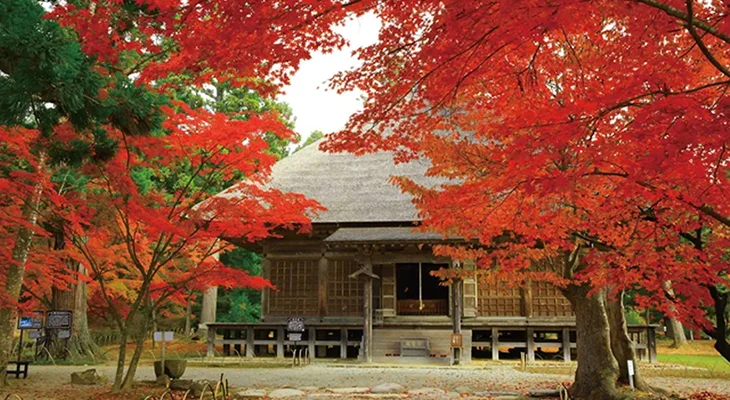
Hiraizumi - Temples, Gardens and Archaeological Sites Representing the Buddhist Pure Land -
In the 12th century, a utopia representing the Buddhist Pure Land was built in the Tohoku region, far removed from Kyoto, with the aim of achieving a peaceful society. Thus was the City of Hiraizumi established. This area of mostly gardens and other sites that blend with nature is the most recent Japanese addition to the World Heritage List. Hiraizumi was registered as a UNESCO World Heritage Site in 2011.
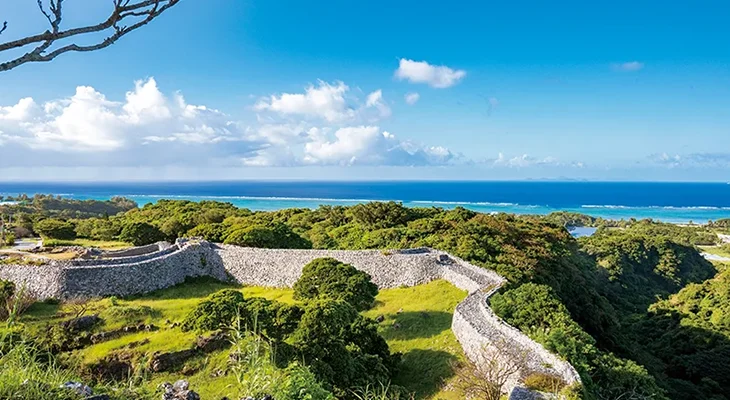
Gusuku Sites and Related Properties of the Kingdom of Ryukyu
The Ryukyu Kingdom was established in Okinawa in the 15th century. Since that time Okinawa has had economic and political relations with China, Japan, Korea and the countries of Southeast Asia. There are nine sites here designated as World Heritage Sites, including five castle ruins and several historic sites that tell of the traditional Okinawan religion of nature- and ancestor-worship.
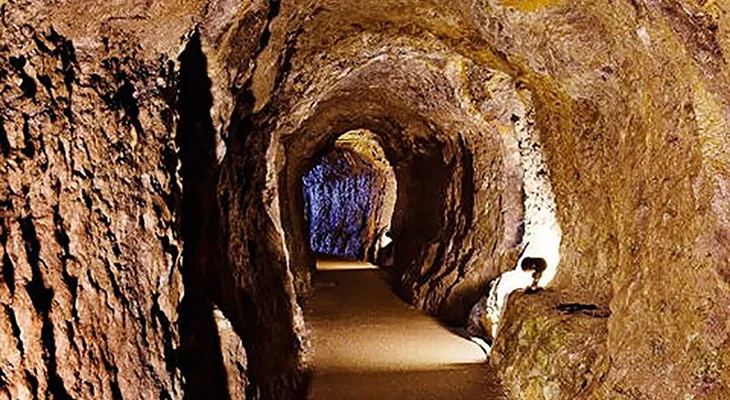
Iwami Ginzan Silver Mine and its Cultural Landscape
In the 16th century, an age of provincial warring in Japan, the world beyond was entering the Age of Exploration. Japan was the source of one-third of the silver in circulation around the world at that time, and most of it is said to have originated from Iwami. The Iwami Ginzan silver mine was designated a World Heritage Site based on its influence on exchanges between East and West, as historic remains of silver production, and as a cultural landscape in harmony with nature.
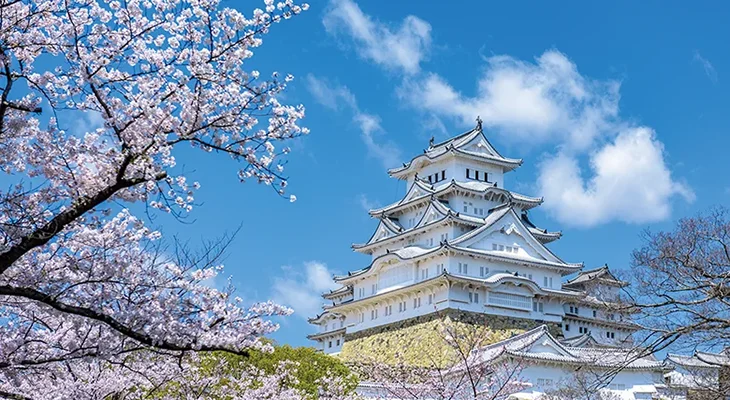
Himeji-jo
Many castles were built in Japan between the 16th/17th century Sengoku (Warring States) period and the Edo period. Among them is Himeji-Jo, one of Japan's most aesthetically refined castles and a prime example of the defensive artifices used in Japanese castle construction. Together with Horyu-ji, it was the first of Japan's World Heritage Sites.
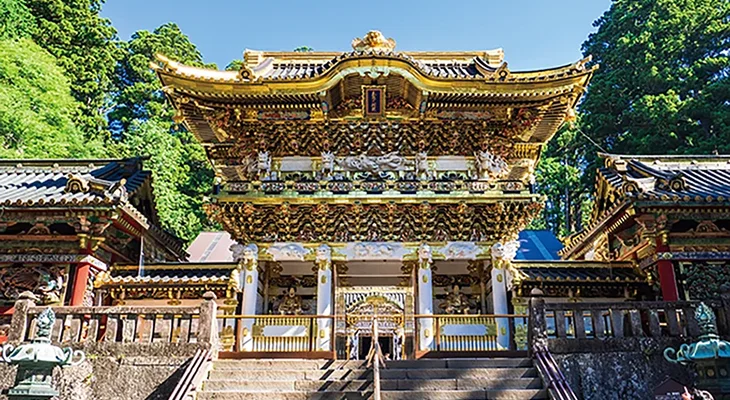
Shrines and Temples of Nikko
At the beginning of the 17th century, towards the end of the Sengoku period, the center of Japanese politics shifted from Kyoto to Edo (present day Tokyo). Nikko Tosho-gu enshrined the first head of the Edo shogunate. The Edo period continued into the middle of the 19th century, and while national policy was isolationist and the class system strict, this gave rise to unique cultural development in each region.
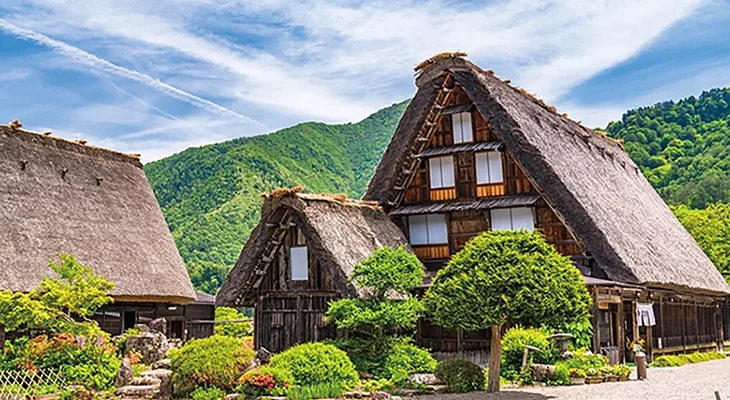
Historic Villages of Shirakawa-go and Gokayama
Gassho-zukuri houses are thought to have first appeared in the villages of Shirakawa-go and Gokayama around the 17th century because of the heavy snowfalls. The steep angles of the roofs and the area's vigorous home-based industry was unique, even in the Japanese countryside, and the villages were designated a World Heritage Site both for this reason, and out of the need to maintain and preserve the inhabitants' traditions.
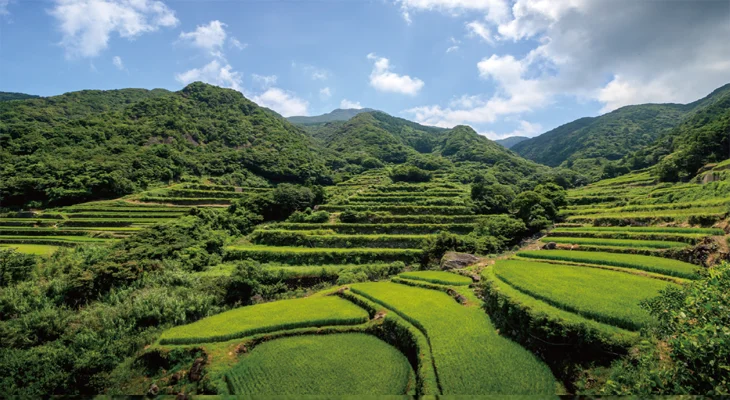
Hidden Christian Sites in the Nagasaki Region
During the 17th to 19th centuries, Christianity was forbidden in Japan, so Japanese Christians had to become “hidden Christians” (senpuku kirishitan). This World Heritage site is full of places that tell their stories, and notably has numerous separate villages where the hidden Christians tried to coexist with other religions in different forms as a way to maintain their faith, or where they moved to in order to maintain their religious organization.
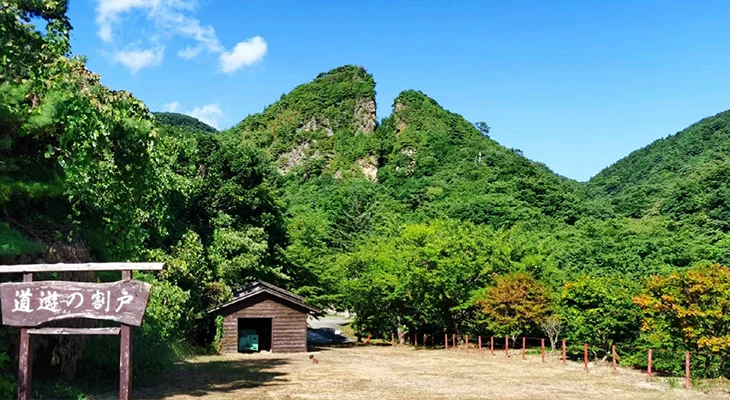
Sado Island Gold Mines
The gold mines on Sado Island were some of the world’s richest during the first half of the 17th century, and represent physical evidence of the culmination of gold production technology using traditional hand methods. This is why they have been added to the UNESCO World Heritage list. The following aspects were rated highly by the committee: gold production continued for more than 250 years thanks to techniques that were enhanced to suit the nature of the deposits; the production process here covered not only extraction and refining but also the production of gold koban coins; and the Tokugawa shogunate created a management system and labor system that made manual work more efficient.
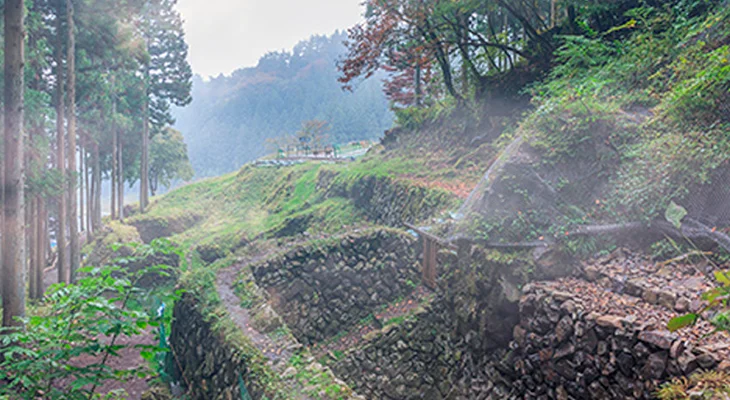
Tomioka Silk Mill and Related Sites
Japan’s modernization started when it opened its doors to the world in the late 19th century. Registered as a UNESCO World Heritage site in 2014, Tomioka Silk Mill and Related Sites serves as both a symbol of Japan’s exchange with the world and, as a result, technological innovation.
The development by Japan of technology for the mass-production of raw silk led to some of the high-quality silk which had been the preserve of the privileged classes becoming popular among the people at large throughout the world.
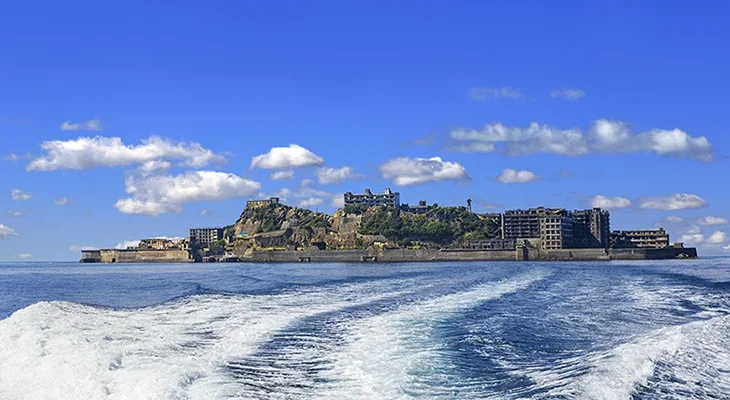
Sites of Japan’s Meiji Industrial Revolution: Iron and Steel, Shipbuilding and Coal Mining
Japan was also able to modernize in the field of heavy industry in a period of half a century starting in the second half of the 19th century. The 23 components, which are facilities (including a leat, dwellings, and an academy) related to iron and steel manufacturing, shipbuilding, and coal mining, are spread throughout Japan and were registered jointly as a UNESCO World Heritage site, including those still in operation.
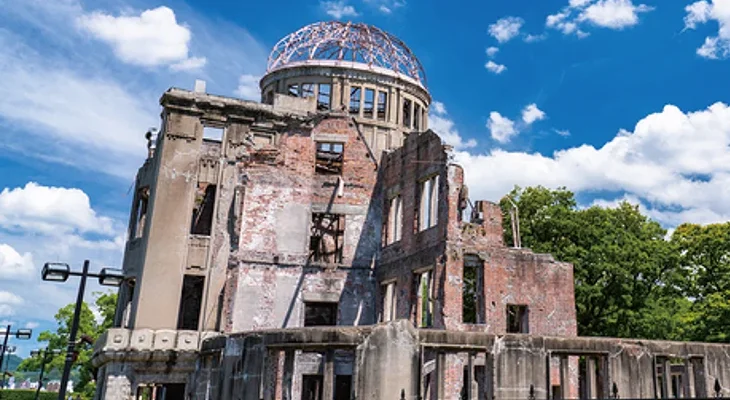
Hiroshima Peace Memorial (Genbaku Dome)
On August 6, 1945, an atomic bomb was dropped on Hiroshima, destroying this structure in an instant, and leaving only the iron frame of the dome. Accordingly, it became known as the Genbaku Dome. The Genbaku Dome was listed as a World Heritage Site to preserve this historical witness to the horrors of the first atomic bomb ever used in human history, and as a symbol of the vow to abolish nuclear weapons and strive for lasting peace.
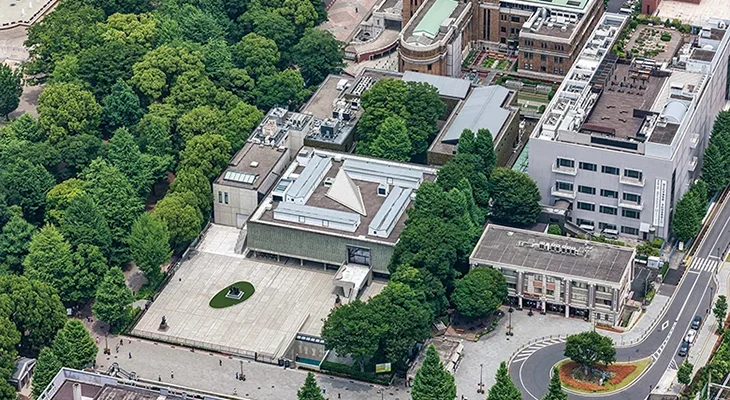
The Architectural Work of Le Corbusier, an Outstanding Contribution to the Modern Movement
One of the component parts of this World Heritage site is the National Museum of Western Art in Taito Ward, Tokyo. Of the works by the Paris-based architect Le Corbusier (1887-1965), seventeen buildings in seven countries (France, Japan, Germany, Switzerland, Belgium, Argentina, and India) are included in this World Cultural Heritage site.




